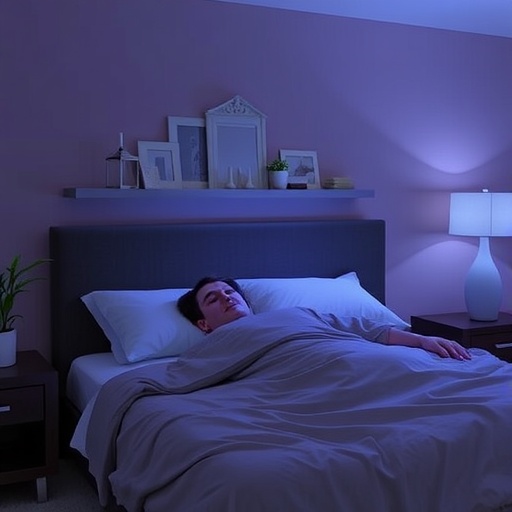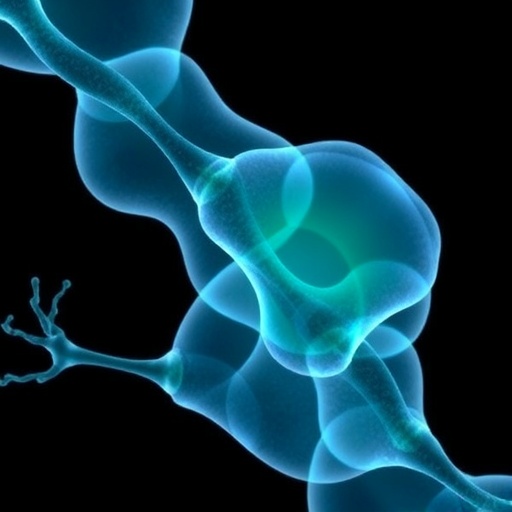
In recent years, the intersection of sleep science and neurodegenerative diseases has gained unprecedented attention, particularly concerning the early detection of Parkinson’s disease (PD) and related alpha-synucleinopathies. A groundbreaking study published by Colman, Schyvens, De Volder, and colleagues in npj Parkinsons Disease has propelled this field forward by introducing novel technologies aimed at the detection of REM sleep behavior disorder (RBD) through home screening methodologies. This innovation represents not just a technical leap but a potential paradigm shift in how neurodegenerative diseases might be diagnosed and monitored long before overt motor symptoms emerge.
REM sleep behavior disorder is a parasomnia characterized by the loss of normal muscle atonia during rapid eye movement (REM) sleep, leading to physical enactments of dreams that can sometimes result in injury. The importance of RBD lies in its strong correlation with alpha-synucleinopathies, a class of neurodegenerative disorders that includes Parkinson’s disease, dementia with Lewy bodies, and multiple system atrophy. Individuals diagnosed with RBD have a remarkably high likelihood of developing one of these disorders within a decade, making RBD one of the most reliable prodromal markers for PD.
Traditional diagnosis of RBD requires overnight polysomnography (PSG), a resource-intensive and often inconvenient clinical procedure involving multiple physiological measurements such as electroencephalography (EEG), electromyography (EMG), and video monitoring. These inherent challenges restrict large-scale screening and delay early intervention opportunities that are critical for neuroprotective strategies. Recognizing these limitations, the research team explored alternative technologies that can democratize access to RBD detection by leveraging wearable devices and advanced machine learning algorithms capable of analyzing complex physiological signals in a home setting.
.adsslot_JAmTi92d0N{width:728px !important;height:90px !important;}
@media(max-width:1199px){ .adsslot_JAmTi92d0N{width:468px !important;height:60px !important;}
}
@media(max-width:767px){ .adsslot_JAmTi92d0N{width:320px !important;height:50px !important;}
}
ADVERTISEMENT
The study reports on the design and validation of a multi-modal system combining wearable sensors that monitor electromyographic activity, cardiac signals, and motion data with sophisticated signal processing techniques. This system is capable of detecting subtle changes in muscle tone and movement patterns typical of RBD, even outside the controlled environment of a sleep lab. Crucially, the device’s signal acquisition is paired with algorithmic classifiers trained on large datasets of confirmed RBD patients and healthy controls, enhancing the sensitivity and specificity of home-based diagnosis.
Among the technologies employed, surface electromyography remains central due to its direct measurement of muscle activity, which is typically suppressed during REM sleep in healthy individuals. The prototype wearable devices incorporate high-fidelity EMG electrodes placed strategically to capture muscle activity related to limb movement during sleep. Coupled with accelerometers and heart rate variability sensors, these sensors provide a rich multidimensional dataset reflecting the complex physiological landscape of RBD.
One of the most impressive innovations presented by the authors is the integration of deep learning frameworks designed to interpret temporal patterns and anomalies associated with RBD episodes. Employing recurrent neural networks and convolutional architectures, the system effectively learns to distinguish between pathological muscle activations indicative of RBD and benign nocturnal movements. The continuous improvement of these models with new data ensures adaptability across diverse patient populations and sleep environments.
In addition to raw data analysis, the technology incorporates cloud-based platforms allowing remote monitoring by clinicians. This capability facilitates longitudinal assessments that capture the evolution of sleep behavior over months or years, potentially identifying subtle transitions from prodromal symptoms to manifest neurodegeneration. Such temporal resolution was previously unattainable with intermittent clinical PSG assessments and holds promise for tailoring individualized treatment regimens.
Importantly, the researchers also addressed patient compliance and usability issues by designing the wearable to be lightweight, wireless, and minimally obtrusive. User experience studies reported high acceptance rates among PD patients and their caregivers, suggesting a viable path toward widespread adoption. The device’s battery life and data security features further underscore its readiness for real-world applications.
Beyond technical aspects, this study engages with the broader implications of home-based RBD screening. Early identification opens a critical therapeutic window during which neuroprotective interventions, lifestyle modifications, or disease-modifying treatments under development could be most effective. Moreover, by capturing a prodromal biomarker remotely, large-scale epidemiological studies become feasible, advancing our understanding of PD’s natural history and heterogeneity.
The ethical dimensions of early RBD detection were also thoughtfully considered. Knowing one’s risk for future neurodegenerative disease poses psychological challenges and demands careful counseling and clinical support infrastructures. The authors propose incorporating these services alongside technological deployment, emphasizing a holistic approach that combines cutting-edge technology with compassionate healthcare delivery.
While acknowledging the robustness of their findings, the authors are transparent about limitations and future directions. Validation in diverse cohorts, including varying ethnicities and comorbidities, remains a priority to ensure broad applicability. Longitudinal studies tracking the predictive value of home-detected RBD in conversion rates to PD will further consolidate the clinical utility of these technologies.
Furthermore, the potential expansion of this technology to detect other sleep disturbances linked with neurodegeneration, such as narcolepsy or periodic limb movement disorder, is an exciting prospect. The modular design of the sensor suite and adaptability of machine learning models facilitates such cross-condition applications, potentially transforming the landscape of sleep medicine.
It is worth noting that this advancement is situated within a broader technological renaissance in neurology, where digital biomarkers extracted from passive monitoring are revolutionizing early diagnostics and personalized medicine. The convergence of wearable tech, artificial intelligence, and cloud computing exemplifies the future of brain health, making diseases like Parkinson’s not only more detectable but perhaps, eventually, more treatable.
In conclusion, the study by Colman and colleagues represents a seminal contribution to Parkinson’s disease research and sleep medicine alike. By harnessing novel technologies for the detection of REM sleep behavior disorder in home settings, the authors illuminate a promising path toward earlier diagnosis, better patient outcomes, and deeper insights into neurodegeneration. As these innovations transition from research prototypes to clinical tools, they hold immense potential to reshape how we identify and intervene in diseases that have long challenged modern medicine.
Subject of Research: Novel technologies for detecting REM sleep behavior disorder in home settings as a prodromal marker for Parkinson’s disease and related alpha-synucleinopathies.
Article Title: Novel technologies for REM sleep behavior disorder detection for home screening in Parkinson’s disease and related alpha-synucleinopathies.
Article References:
Colman, K., Schyvens, AM., De Volder, I. et al. Novel technologies for REM sleep behavior disorder detection for home screening in Parkinson’s disease and related alpha-synucleinopathies. npj Parkinsons Dis. 11, 196 (2025). https://doi.org/10.1038/s41531-025-01032-w
Image Credits: AI Generated
Tags: alpha-synucleinopathies screeningclinical implications of RBDearly detection of Parkinson’s diseasehome-based sleep monitoringmuscle atonia loss in REM sleepneurodegenerative disease diagnosisnovel home screening technologyparasomnia diagnosis innovationsParkinson’s disease prodromal markersREM sleep behavior disorder detectionremote polysomnography alternativessleep science advancements





